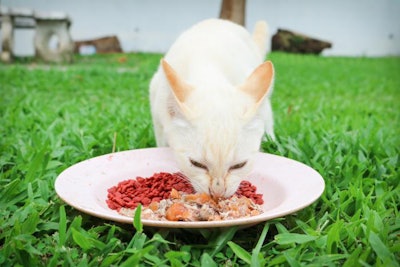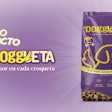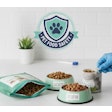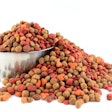
Gearing up for the upcoming “Taste of Pet Food’s Future” Innovation Workshop (April 3) at Petfood Forum, Packaged Facts surveyed dog and cat owners about their use of pet food toppers, mix-ins or gravies/sauces.
Clearly, a varying combination of palatability, pampering, nutritional, customization and coaxing issues are front-of-mind for many pet food purchasers, given that 28 percent of dog owners and 22 percent of cat owners use commercial pet food toppers, mix-ins or gravy/sauce products, and 32 percent of dog owners and 18 percent of cat owners mix human foods or food products in with their commercial pet food (see Figure 1).

FIGURE 1: Pet owners are as likely to use human foods to supplement their pets’ primary diets as industry-made pet food toppers, according to Packaged Facts survey data.
A variety of mix-in options
When it comes to human food, the range of mix-ins that pet owners turn to is almost as broad and chaotic as American cuisine and eating patterns. This range includes breakfast foods (biscuits, donuts, pancakes, muesli, sausage gravy, scrambled eggs), sandwich classics (ham and cheese, peanut butter and jelly), fast-food fare and condiments (French fries, hamburgers, hot dogs and KFC fried chicken, along with ketchup, mustard and even hot sauce) and hot meal standards (beef stew, macaroni and cheese, meat and potatoes, meatloaf).
International foods and ingredients also get a nod (Belgian cheese, curry, mango, papaya, salsa), as do the related realms of culinary trends (hummus, legumes, olive oil, salami, sweet potato, yogurt) and trendy human market health food ingredients (coconut oil, turmeric).
Primarily and perhaps reassuringly, nonetheless, “where’s the beef?” (or at least, “where’s the protein?”) is the main impetus for pet food mix-ins (see Figure 2). Among dog owners, the most common add-ins by category are meat or meat drippings (at 26 percent of unprompted/write-in mentions), the related (and moisturizing) category of gravies, sauces or broths (17 percent), and poultry (15 percent). By type of meat, the most common mentions were beef (7 percent of mentions), followed by ham and hamburger/ground beef.

FIGURE 2: Of the pet food mix-in options available, consumers tend to gravitate towards meat proteins.
Vegetables are also a common add-in, at 13 percent of mentions, in keeping with the superpremium pet food formulation trends, with carrots slightly edging out sweet potato for the top spot. Notwithstanding the grain-free trend associated with natural and superpremium pet foods, grains and grain-based products account for 12 percent of mix-ins. In terms of grains, rice is by far in the most popular mix-in, with rice or brown rice accounting for 7 percent of mentions, trailed by miscellaneous savory or sweet choices ranging from buttered bread to cereal to Nutter Butter cookies or pizza crust. Dairy mix-ins are also popular, with milk running a close second to cheese, including shredded or grated cheeses.
Industry opportunities and challenges
Pet owners’ use of human food mix-ins is not necessarily a critique of commercial pet food formulations — from which, in fact, many pet owners seem to be taking their cues. Along with moisturizing dried foods, pet owners use mix-ins to pamper, customize and reward for good behavior, with a degree of “speed-scratch cooking” serving to strengthen the bond between pet parent and pet.
While this is obviously the case for parenting of children, as well, human food manufacturers have it easier in at least one important dimension: the proof is in the pudding, and no species gap (the human-animal bond notwithstanding) exists between buyer and end user. Pet food, in contrast, has the complex and in some ways contradictory task of appealing to both pet parent and pet, each with their sometimes idiosyncratic expectations and preferences, which can be fad-driven or nutritionally incorrect.
More on the Petfood Forum 2017 Innovation Workshop



















